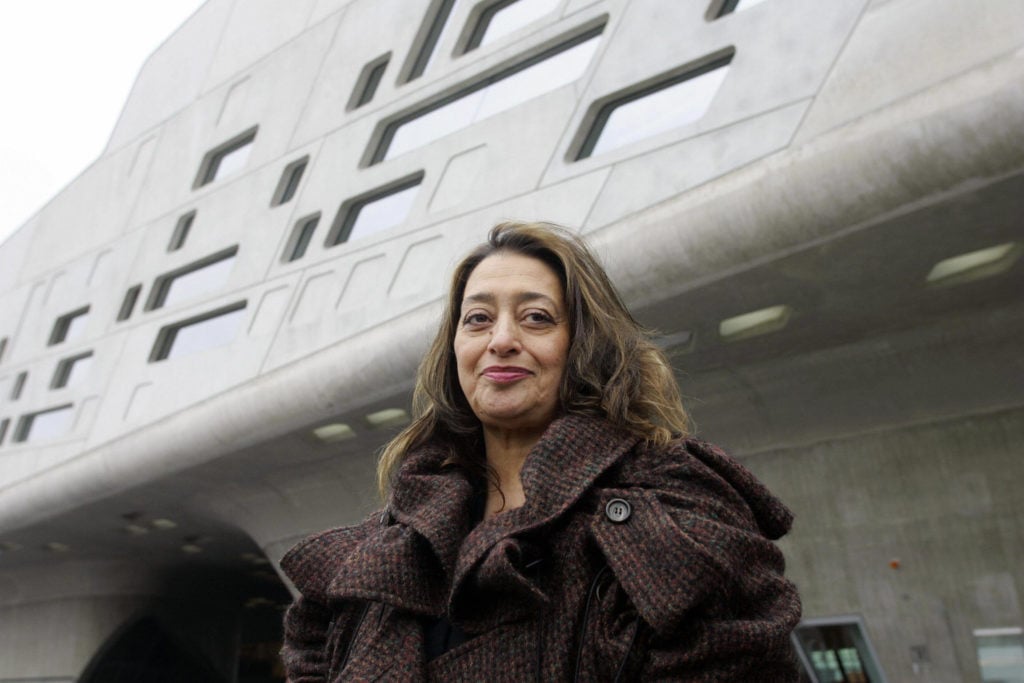People
Zaha Hadid’s Will Reveals $81 Million Fortune
Patrik Schumacher, her successor at the firm, is also a trustee and a beneficiary.

Patrik Schumacher, her successor at the firm, is also a trustee and a beneficiary.

Lorena Muñoz-Alonso

Zaha Hadid’s will has been published, revealing that the late architect left a fortune of £70 million ($85 million) when she died unexpectedly in March 2016, at the age of 65. After debts, the estate’s total value stands at £67 million ($81 million).
According to the Architects’ Journal, which published the public documents, the figure reflects all her assets, including the firm Zaha Hadid Architects, of which she was the sole shareholder. Her other companies and private assets, such as her penthouse in the London area of Clerkenwell, are also included.
The documents also show that at the time of her death Hadid was more than £3 million ($3.6 million) in debt.
Hadid bequeathed a lump sum of £500,000 ($610,000) to her business partner Patrik Schumacher, who’s now at the helm Zaha Hadid Architects (ZHA). He’s the only non-family beneficiary named in her will.
The Iraqi-born architect, who wasn’t married and did not have children, also left a total of £1.7 million ($2 million) to her four nieces and nephews, and £500,000 ($610,000) to her brother, Haytham Hadid.
Like the rest of her estate, the architecture practice, which forms the bulk of her fortune, is now in trust. As well as being a beneficiary, Schumacher is one of its four executors, alongside property developer Peter Palumbo, artist Brian Clarke, and the architect’s niece Rana Hadid.
The group of trustees might have gotten off to a bad start, however. Last November, Palumbo, Clarke, and Rana Hadid released an open letter rejecting the statements that Schumacher made at the World Architecture Festival in Berlin earlier that month, which included controversial ideas like privatizing public spaces, scrapping social housing projects, and abolishing all government regulations on corporate developers.
Hadid gave her trustees power to distribute all or some of the income from her several businesses, including the practice, to a wide range of parties, including “past, current, and future employees and office holders of the companies,” and the Zaha Hadid Foundation, set up to promote architectural education and exhibitions of her work. Others who could benefit are family members and charities.
The will also allows executors to add further beneficiaries of their own volition.
AJ reports that typical wills might see an estate distributed within two years, but Hadid’s testament gave executors up to 125 years from the date of her death to distribute hers.
If the executors fail to reach an agreement, or take no action within 125 years, the estate will be transferred to the Zaha Hadid Foundation. Executors, however, may face a legal challenge if they do not distribute the estate in the beneficiaries’ best interests.
Experts said Hadid’s will was likely to have been accompanied by a non-legally binding private letter of wishes addressed to the executors, in which she would have expressed her plans with regards to the estate in greater detail.
“The only guidance is likely to be in that letter of wishes, which almost certainly will have accompanied this will. But it is not a public document,” Ceris Gardner, partner at private wealth law firm Maurice Turnor Gardner, told the AJ.